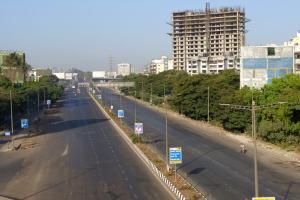Restriction imposed on vehicular movement results in significant decline in air pollution in Mumbai and few other Metro cities in the country

A deserted highway in Mumbai during the lockdown on March 22
The air quality in Mumbai improved as citizens stayed indoors and few vehicles were seen on the roads in view of the lockdown imposed by the Maharashtra government to curb the spread of coronavirus in the state.
ADVERTISEMENT
As per data released by System of Air Quality and Weather Forecasting And Research (SAFAR), the restriction in vehicular traffic due to Janata Curfew has played a significant role in improving the air quality in most big cities in the country, including Mumbai.
As per the report, nitrogen oxide levels in the atmosphere in March 2020 have fallen by approximately 45% in Mumbai as compared to 2108 and 2019. On 22 March, the day of Janata curfew, the NOx levels declined by 30 per cent, while the PM2.5 declined by 20% as compared to other days.
If vehicle movements are stopped completly, there would be a significant decline in nitrogen oxide (NOx) emissions, PM10 and PM2.5 will reduced and reduction is expected in PM10 levels as well, the SAFAR report said.
On Tuesday, maximum temperatures in Mumbai was around 32°C at 11: 30 am, according to the weather forecast of the India Meteorological Department (IMD)
Catch up on all the latest Crime, National, International and Hatke news here. Also download the new mid-day Android and iOS apps to get latest updates
 Subscribe today by clicking the link and stay updated with the latest news!" Click here!
Subscribe today by clicking the link and stay updated with the latest news!" Click here!






